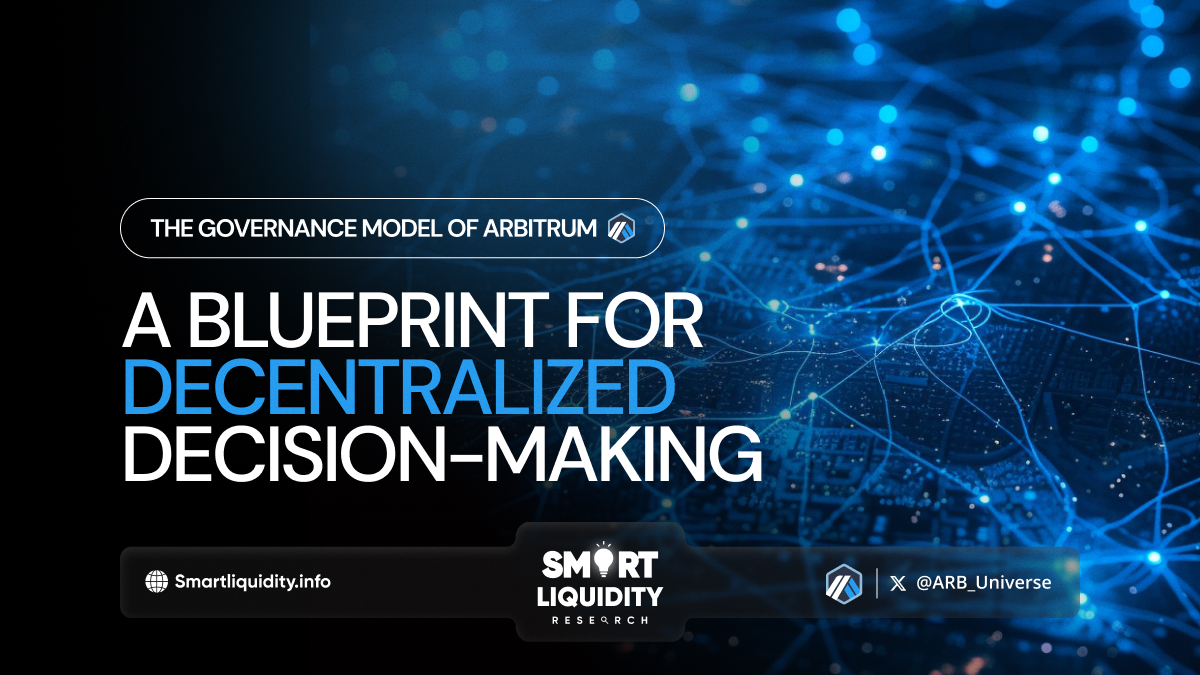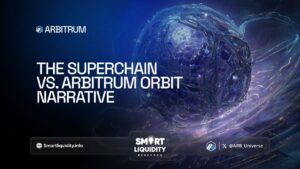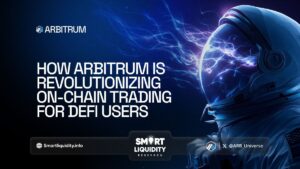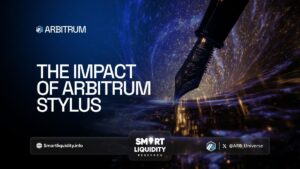Decentralized Decision-Making: Arbitrum’s Governance Model


Decentralized Decision-Making: Arbitrum’s Governance Model. In the ever-expanding landscape of blockchain technology and decentralized finance (DeFi), the question of governance looms large.
How can decentralized platforms effectively manage decision-making processes while maintaining transparency, security, and efficiency? Arbitrum, a layer 2 scaling solution for Ethereum, offers a compelling blueprint for decentralized governance that could shape the future of the industry.
Understanding Arbitrum
Arbitrum operates as a layer 2 scaling solution for Ethereum, aiming to increase transaction throughput and reduce fees while maintaining the security and decentralization of the Ethereum network. At its core lies a unique governance model designed to empower stakeholders and foster community-driven decision-making.
The Role of Arbitrum’s Governance
Governance within the Arbitrum ecosystem is crucial for maintaining the integrity and evolution of the platform. It encompasses a range of decision-making processes, including protocol upgrades, fee adjustments, and the allocation of resources. Unlike traditional centralized models, where decisions are made by a select group of individuals or entities, Arbitrum’s governance model is decentralized, allowing stakeholders to participate in key decisions.
Key Components of Arbitrum’s Governance Model
- Token Holder Voting
At the heart of Arbitrum’s governance are its token holders. Each holder has the opportunity to participate in governance by voting on proposals that impact the platform. This democratic approach ensures that decisions are reflective of the collective will of the community. - Proposal Process
Proposals can be submitted by any member of the community and must undergo a period of discussion and review before being put to a vote. This open and transparent process allows for constructive feedback and ensures that proposals are thoroughly evaluated before implementation. - Governance Tokens
Governance tokens play a pivotal role in Arbitrum’s governance model. They grant holders voting rights and incentivize active participation in the decision-making process. By aligning incentives, governance tokens encourage stakeholders to act in the best interests of the platform. - Timelocks and Governance Delay
To prevent hasty or reckless decision-making, Arbitrum implements timelocks and governance delays on proposed changes. This ensures that stakeholders have sufficient time to review and assess proposals, reducing the likelihood of impulsive decisions that could negatively impact the platform.
Advantages of Arbitrum’s Governance Model
- Decentralization
By distributing decision-making power among stakeholders, Arbitrum’s governance model prevents centralization and promotes a more inclusive and democratic approach to governance. - Transparency
The open and transparent nature of Arbitrum’s governance model fosters trust and accountability within the community. Stakeholders have visibility into the decision-making process, allowing for greater scrutiny and oversight. - Flexibility
Arbitrum’s governance model design is to adapt to evolving needs and challenges. With the ability to propose and vote on changes, stakeholders can steer the platform in a direction that aligns with their collective vision and goals. - Security
Through the use of governance tokens, timelocks, and governance delays, Arbitrum’s governance model helps mitigate the risk of malicious actors or hastily implemented changes that could compromise the security of the platform.
In Summary
As blockchain technology continues to mature, the importance of effective governance models cannot be overstated. Arbitrum’s governance model stands as a testament to the power of decentralization in shaping the future of decentralized finance. By empowering stakeholders and fostering community-driven decision-making, Arbitrum provides a blueprint for a more inclusive, transparent, and resilient decentralized ecosystem. As the industry continues to evolve, we’ll likely see more platforms adopt similar governance models, further advancing the principles of decentralization and democratization in the world of blockchain technology.




